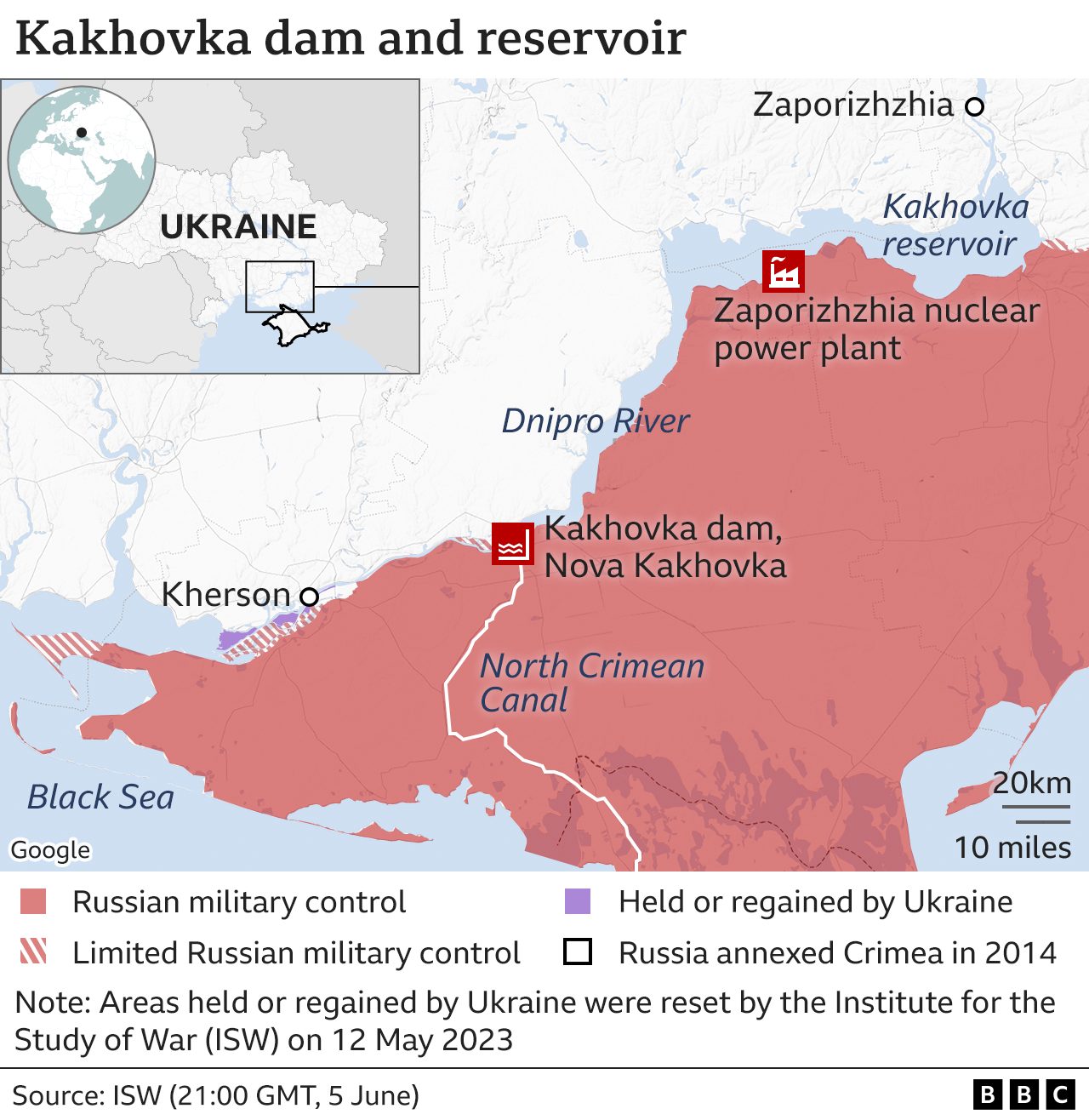BBC News 6 June 2023
A huge dam in the Russian-occupied area of southern Ukraine has been breached, unleashing a flood of water downstream. So who benefits from this act of vandalism?
With both sides, Russia and Ukraine, blaming the other for breaching the dam, there are echoes of last year's unexplained Nordstream gas pipeline explosions. In both cases western suspicions have immediately fallen on Russia. But both times Moscow has responded with: "It wasn't us. Why would we do this? This hurts us".
In the case of the Kakhovka dam breach Russia can point to at least two ways it damages their own interests. The flooding of land downstream has forced it to evacuate troops as well as civilians eastwards, away from Kherson and the banks of the broad River Dnipro. This will provide some limited respite for Kherson's residents who have had to live with daily Russian artillery and missile strikes.
Secondly, this could affect the water supply for Russian-occupied Crimea, an arid peninsula that relies on fresh water from a canal close to the breached dam. Since it was illegally annexed by Russia in 2014 it has become a heavily fortified piece of land that both Russia and Ukraine claim as their own.
But the breaching of the Kakhovka dam needs to be seen in the wider context of the Ukraine war and more specifically in the light of Ukraine's summer counter-offensive, which shows signs of already being under way.
In order for this counter-offensive to succeed, it needs to break Russia's stranglehold over a swathe of territory it seized last year that connects Crimea to Ukraine's eastern Donbas region. If Ukraine can find a way to break through Russian defensive lines south of Zaporizhzhia and split that territory in two then it can isolate Crimea and achieve a major strategic victory.
But the Russians have learnt a lot of lessons since their full-scale invasion in February last year. They've looked at the map, worked out where Ukraine is most likely to attack and spent the last few months building truly formidable lines of fortifications to block any Ukrainian advance towards the Sea of Azov.
It's by no means certain that Ukraine was planning to send its forces around to the western side of those defences. The High Command in Kyiv sensibly keeps its cards close to its chest to keep Russia guessing.
But this action, whoever did it, now makes that option far more problematic.
The Dnipro was already a wide river by the time it reaches southern Ukraine and getting an armoured brigade across it, under Russian artillery, missile and drone fire would be extremely hazardous.
With the dam across it now breached and huge swathes of land downstream flooded the area on the left (eastern) bank opposite Kherson has effectively become a no-go area for Ukrainian armour.
One historical footnote is that Russia does have past form in this area. In 1941 Soviet troops blew up a dam over the same River Dnipro to block the advance of Nazi troops. Thousands of Soviet citizens are said to have perished in the ensuing floods.
The bottom line now though, is that whoever breached the Kakhovka dam this week has upset the strategic chessboard in southern Ukraine, forcing both sides to make a number of major adjustments and possibly delaying Ukraine's next move in its long-promised counter-offensive.

